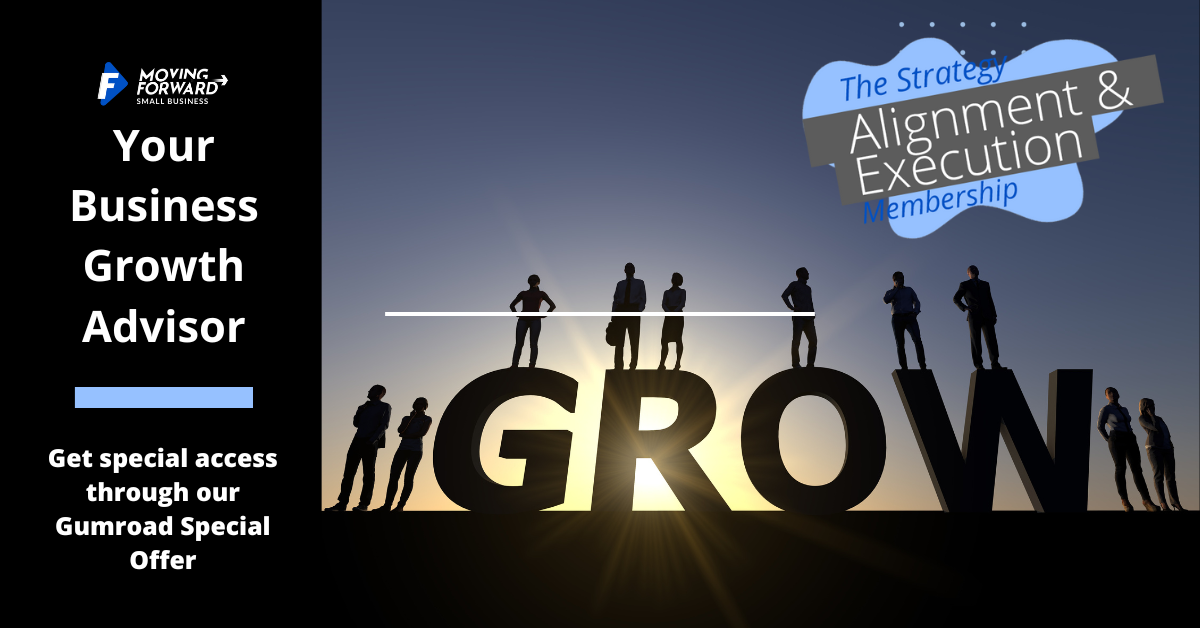Key Highlights
- Learn how inbound marketing can bring in your perfect customers by giving them helpful content and experiences that meet their needs.
- Discover how inbound sales can support leads moving through the sales funnel. A personalized approach helps build relationships and leads to more sales.
- Explore smart content creation methods, like blogging and using videos, to increase your online visibility and engage more people.
- Master SEO techniques, such as keyword research and both on-page and off-page optimization, to help your site rank better in search results.
- Unlock the benefits of email marketing by growing your list and creating content that connects with your audience.
- Improve your customer service to create a better customer experience and develop strong relationships for long-term business growth.
The Complete Inbound Strategy Series
- Mastering Inbound Strategies for Small Businesses (You are reading now)
- The Power of Inbound Marketing for Small Businesses
- The Ultimate Guide to Inbound Sales for Small Businesses
- Inbound Content Marketing Mastery for Business Growth
- Maximizing Inbound Revenue for Small Businesses
- Inbound Calls 101: Handling Tips for Small Businesses
- Leveraging Inbound AI for Small Business Growth
- 10 Inspiring Inbound Sales Examples for Small Businesses
- 8 Winning Inbound Marketing Examples for Small Business Owners
- Small Business Success: Understanding Inbound vs. Outbound
Introduction
In today’s digital world, small businesses can use inbound marketing to succeed. This method is different from traditional outbound marketing. Inbound marketing aims to attract the right customers by offering useful content and experiences that meet their needs. By using inbound strategies, small businesses can create strong relationships and become trusted sources in their fields.
Understanding Inbound Marketing for Small Businesses
Inbound marketing is a lively way to attract the right customers. Instead of chasing customers with cold calls or random ads, you create great content that speaks to your audience.
HubSpot, a top marketing automation platform, explains inbound marketing as “attracting customers by creating valuable content and experiences tailored to them.” This method focuses on knowing who your ideal customers are. It also means matching your content to their needs, interests, and problems.
The Fundamentals of Inbound Marketing
Content creation is very important for inbound marketing. By making engaging blog posts, useful articles, eye-catching videos, and other types of content, you can attract and connect with your target audience.
Social media is key for getting your content seen by more people. Platforms like LinkedIn, Facebook, Twitter, and Instagram give you good ways to share what you know, connect with potential customers, and build your brand.
SEO, or Search Engine Optimization, helps your content show up in search engines like Google. By improving your website and content with relevant keywords and smart strategies, you can increase your search engine rankings and bring more organic traffic to your website.
How Inbound Marketing Differs from Traditional Marketing
Traditional marketing often tries to catch your attention with ads, cold calls, or messages that are not personal. This approach can feel annoying and doesn’t usually work well. On the other hand, inbound marketing focuses on giving your audience a good experience. It does this by providing valuable and relevant content.
Inbound marketing works to engage, educate, and empower your audience at every step of their customer journey. This method is centered around customers. It uses data and AI to make marketing efforts more personal and to better the customer experience.
By changing your focus from just selling to delivering value and building strong relations, inbound marketing helps you attract the right customers in a natural way. It also helps build brand loyalty that lasts over time.
The Power of Inbound Sales

Inbound sales work well with inbound marketing. It goes past old, often pushy sales methods and focuses on the customer. This means you listen to your prospects and understand their specific problems. Then, you offer solutions that really matter to them.
Lead nurturing is important in inbound sales. It helps guide potential customers through the sales process with tailored content and interactions. By creating trust and real connections, inbound sales help turn leads into loyal customers.
Creating Effective Buyer Personas
Before starting any marketing strategy, you must understand your target audience well. Creating detailed buyer personas helps you identify your ideal customers and run better, more focused campaigns.
Buyer personas are fictional representations of your ideal customers built on data and research. They provide information about your audience’s demographics, reasons for buying, challenges they face, and their dreams. When you know ‘who’ you want to reach, your marketing messages will be much stronger.
Identifying Your Target Audience
Identifying your target audience is key for good inbound marketing. Doing careful market research helps you find important details about your audience, like their age, interests, online habits, and problems.
You can use social media analytics to learn about what your followers like, how they engage, and their backgrounds. These tools help you understand your audience better, allowing you to shape your content and focus your marketing in a more effective way.
When you know what your target audience needs and likes, you can create content that connects with them. This way, you can offer solutions and make your brand a trusted source that speaks to them directly.
Tailoring Your Message to Different Buyer Personas
Creating specific buyer personas for your ideal customers helps you make content that truly connects. It moves away from a basic approach and focuses on what each persona really needs and faces.
You can craft your message for different buyer personas in these ways:
- Content Creation: Write blog posts, ebooks, and social media content that fits the interests and worries of each persona. Talk about their challenges and offer solutions.
- Communication Style: Use a tone and style that they are comfortable with. Some personas may like a formal tone, while others prefer a casual one.
- Channel Selection: Find your audience where they like to spend time online. Look into which platforms each persona uses and focus your attention there.
When you understand each persona’s journey, you make their experience personal. This creates a feeling of being recognized and improves the overall customer experience.
Content Creation Strategies
A strong content strategy is essential for inbound marketing. It is not just about making content. It’s about creating valuable and interesting pieces that connect with your audience. This can include helpful blog posts and eye-catching videos. Having variety is important.
Blogging is a great way to share what you know. It helps you become a leader in your field. Engaging in videos can also help improve your social media presence. Consistency is very important. By regularly posting new and high-quality content, you keep your audience engaged and make them want to come back for more.
Blogging for Business Growth
Blogging can really help your business grow. With good, interesting content, you can show that you know your stuff. This builds trust with your readers. Every blog post becomes something valuable that brings in readers looking for answers.
Using SEO in your blogging plan is smart. It helps your content appear higher in search engine results. By picking the right keywords and making your posts better, more people will see your site and visit it.
Think of your blog as a main hub. It’s a space where you can answer questions about the industry. You can share helpful ideas and give great resources to attract your target audience. When you blog often and keep it high quality, you will get a loyal group of readers. This makes your brand stand out as an authority in your field.
Leveraging Video Content for Higher Engagement
Video creation is very important in today’s digital world. The average person watches a lot of video content each day. This makes video a great way to connect with your audience and improve engagement.
Social media platforms recognize the power of video. They provide businesses with a great chance to reach their audience. You can create short and fun videos on apps like TikTok and Instagram. You can also make longer, detailed videos for YouTube. The possibilities are huge.
With video, you can show what makes your product valuable. You can share what customers say about you or give viewers a look behind the scenes of your business. Try different styles and formats in your videos. This can help you engage your audience and make a strong impact.
SEO Optimization Techniques

SEO stands for Search Engine Optimization. It is very important to help your content reach the right audience. In simple terms, it means making your website and content easy to find on search engines like Google. This helps potential customers discover you.
First, do keyword research. Find out the words and phrases your target audience uses when looking for information related to your products or services. Use these keywords naturally in your website content, meta descriptions, and image tags. This will improve your SEO ranking and bring more visitors to your pages.
Keyword Research and Implementation
Effective keyword research is key to a good SEO strategy. It means finding the words and phrases your audience types into Google or other search engines.
You can use keyword research tools to find helpful keywords, determine how often they are searched, and determine their level of competition. Look at how relevant they are to your business. Choose keywords that have good search numbers but less competition.
After finding your keywords, use them naturally in your website text, blog posts, headings, and image alt tags. Don’t overuse them because Google will punish sites that do. Instead, try to create high-quality content that meets what users are looking for.
On-Page and Off-Page SEO Best Practices
SEO has two important parts: On-page and Off-page optimization. Both are key for making your website easier to find and improving its rankings.
On-page SEO means improving parts of your website directly. This includes using important keywords in your webpage titles, headings, and content. It also means optimizing images with clear descriptions and making sure your site is easy to use and works well on mobile devices.
Off-page SEO is about building your website’s authority and reputation outside of your site. This includes getting backlinks from trusted sources, creating content that people like and share on social media, and managing online reviews and citations. A strong content strategy is important in off-page SEO because it provides useful content that people want to share.
Implementing Successful Email Marketing Campaigns
Email marketing is a strong way to engage leads, create connections, and boost sales. A good email can offer helpful information, share news, promote deals, and encourage subscribers to buy.
Begin by growing your email list naturally. Provide appealing rewards like ebooks, webinars, or special discounts for email sign-ups. Keep in mind creating interesting content is very important. Make your emails personal so they connect with your audience. Divide your list based on interests and improve your subject lines to get more opens.
Building Your Email List
Building a strong email list is important for good inbound marketing. It gives you a direct way to connect with potential customers who are interested in your brand. This way, you can share helpful content and special offers with them.
Add opt-in forms to your website. Place them where visitors can easily see them to gather their information. To encourage sign-ups, provide valuable lead magnets like ebooks, guides, checklists, or unique discounts. Make sure the sign-up process is simple and friendly.
Organize your email list by subscriber interests and how they engage. This lets you send more personalized content. Use email automation to nurture leads based on their actions, like visiting your site or downloading content. This helps guide them through the sales funnel with focused messaging.
Crafting Engaging Email Content
In the busy world of email marketing, it is very important to create content that captures attention. You need to write subject lines that spark curiosity to improve open rates.
Make your emails personal by using the recipient’s name and splitting your lists. This way, you can send relevant content based on their interests. People are more likely to respond to emails that match their specific needs and preferences.
Use good-quality images, clear formats, and a strong call to action. This helps guide recipients to do what you want, like visiting your website, downloading something, or making a purchase. A good customer experience includes your email communications, too.
Lead Nurturing
Lead nurturing is very important in inbound marketing. It means helping qualified leads move through the sales process. You do this by giving them useful content and personal experiences that match where they are in their path as a customer.
Using targeted emails, relevant content offers, and personal interactions, you can nurture leads. This builds trust and guides them toward making a purchase. Effectively nurturing leads helps boost your conversion rates and creates strong customer relationships.
Customer Service
In today’s digital world, great customer service is a must. Quick and helpful support can greatly improve the customer experience. It affects how people see your brand and whether they come back to buy again.
Make sure to ask for customer feedback and quickly handle any issues. Always try to go beyond what they expect during each interaction. This focus on customers helps keep them happy and loyal. It turns one-time buyers into faithful fans of your brand.
By making customer service a key part of your plan, your business can earn a strong reputation for providing a great customer experience. This can set you apart in a busy market.
Conclusion
In conclusion, learning inbound strategies is very important for small businesses to succeed in today’s tough market. By knowing the basics of inbound marketing, making strong buyer personas, and using good content creation and SEO techniques, businesses can draw in and connect with their target audience. Taking care of leads and offering great customer service helps build strong relationships with customers. Join our Strategy Alignment and Execution membership community today and start with our 6+ hours of training on “Inbound Marketing Strategies for Your Small Business.”
Frequently Asked Questions
What are the first steps in developing an inbound strategy for a small business?
The first step for small businesses to start an inbound strategy is to define your target audience. You need to create specific buyer personas. Then, make sure your marketing strategy matches their needs and preferences. For useful guidance and tools, check out the resources from HubSpot.


